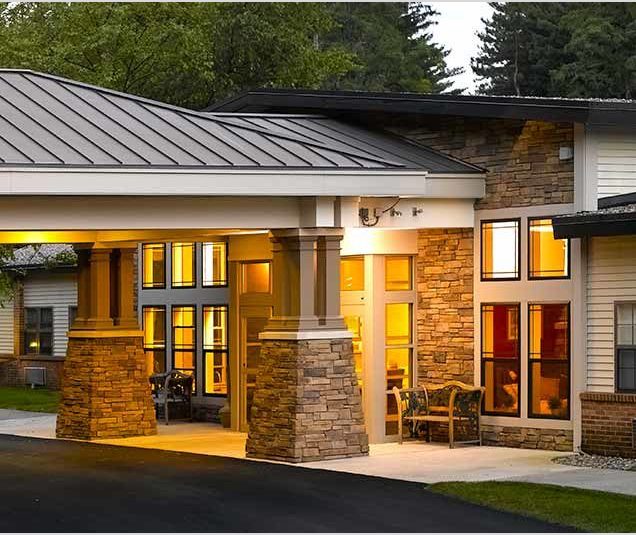When transitioning a loved one into a senior living community, the process can feel overwhelming. You want them to feel at ease, comfortable, and embraced within a new space that they can call home. One of the most impactful ways to achieve this is by creating a room that feels familiar, inviting, and uniquely theirs.
Decorating an assisted living or memory care room is about balancing personalization, comfort, and functionality to ensure your loved one feels safe and cherished.
The Importance of Your Own Space
Each person in a senior living community has unique requirements. Once you understand these needs, you’re closer to creating a space that feels right for them. However, for residents in assisted living or memory care lifestyles, let physical and cognitive needs guide your decorating decisions.
Consider mobility concerns. If your loved one uses a walker, wheelchair, or cane, the room should provide wide, clutter-free pathways to help them move around easily. Memory care presents its own set of challenges. Familiarity and simplicity are key. Spaces should feel intuitive to minimize confusion and frustration.
Personalizing the Space
A home should reflect the person who lives in it. Add meaningful items that make them smile—things like family photos, childhood keepsakes, a favorite blanket, or well-loved books. These little touches can bring back happy memories and make a room feel like home.
Personal items like these can do more than just decorate a room—they help create a sense of connection, reduce stress, and make the space feel familiar, especially for someone who might be feeling a bit out of place.
If you’re setting up a space for a loved one, try involving them in the process. Let them pick out the things they love most. This is a great way to make sure the room truly reflects their personality and feels just right for them.
Choosing the Right Furniture
When choosing furniture for assisted living or memory care spaces, comfort and practicality should come first. Look for chairs and beds that are sturdy and offer good support to meet physical needs. Furniture with rounded edges is also a smart choice to help prevent injuries.
Think about investing in adaptive furniture as it can make a big difference. Chairs with lift-assist features or adjustable beds can make daily tasks safer and easier. And don’t forget about nightstands or tables with built-in storage—they’re great for keeping things neat and within reach.
Keep in mind that a less-is-more approach works well for these spaces. Too much furniture can create clutter, making the room feel smaller and less functional. Stick to the essentials while adding thoughtful touches that elevate both form and function.
Creating a Soothing Atmosphere
Simple changes in color, lighting, and sound can completely change how a space feels. Soft, neutral tones are great for creating a relaxing vibe, while warm colors can make things feel extra cozy. For memory care, soft blues, greens, or pastel shades are especially calming.
Natural light is the best for well-being, but make sure to have curtains or blinds to control glare—nobody likes that uncomfortable brightness! Adding bedside lamps or nightlights can provide extra light and a sense of security, especially at night.
Don’t forget about sound. Soft background music or familiar tunes can make a space feel peaceful and comforting. Keeping loud or distracting noises to a minimum can go a long way in creating a calm, relaxing atmosphere.

Ensuring Safety & Accessibility
Keeping a living space safe and accessible gets even more important as we get older. Start by getting rid of tripping hazards like loose rugs or tangled cords, and make sure the floors aren’t slippery. Adding grab bars near the bed and in the bathroom can also make a big difference by providing extra support where it’s needed most.
It’s also a good idea to keep everyday items within easy reach to avoid bending or stretching too much. And don’t forget to arrange furniture so there’s plenty of space to move around safely—clear, open paths can help prevent falls and make life a whole lot easier.
Engaging the Senses
Adding sensory elements to a room can make it feel more comforting and uplifting for your loved ones.
- Think soft textures like cozy blankets, fluffy pillows, or a textured throw—they’re perfect for adding warmth and comfort.
- Familiar scents can also work wonders. An essential oil diffuser or lightly scented candles (if safe) with lavender, vanilla, or floral notes can bring calm and spark soothing memories.
- Don’t forget visual touches like artwork or decorations featuring nature or familiar places to brighten the space and lift the mood.
These small, thoughtful additions can create a more positive environment, especially for those facing cognitive challenges.
Making it Feel Like Home
Decorating a loved one’s room is all about creating a space that feels safe, happy, and truly like home. Simple details, like using their favorite colors, adding seasonal decorations, or hanging meaningful artwork, can make a huge difference.
The key is to respect their preferences. Talk to them about what they like, their favorite memories, and what makes them feel comfortable. Involving them in the process not only makes the space more personal but also gives them a sense of ownership and belonging. It’s all about working together to create something special!
Start a New Chapter With Us
Helping a loved one move to a senior living community is a big step, and it’s all about making sure they feel supported and cared for. At Peregrine Senior Living at Guilderland, we focus on creating a warm, welcoming space where everyone can feel at home and enjoy meaningful experiences.
Come see what makes our community so special! Book a tour today and see how we prioritize safety, connection, and comfort for all our residents. Discover a place where your loved one can truly thrive!













Always so many smiling faces when pet therapy comes each month, especially this month with a new puppy and the dogs dressed up for Christmas! 🐶🎄 ... See MoreSee Less
0 CommentsComment on Facebook
Christmas caroling with the Girl Scouts this Sunday afternoon!🎄☃️❄️🎶 ... See MoreSee Less
2 CommentsComment on Facebook
Fun Saturday morning doing a make your own snow globe craft & these beautiful ladies wearing these gorgeous shawls that were donated to us! ☃️❄️😊 ... See MoreSee Less
2 CommentsComment on Facebook
Beautiful sun catchers made on memory care today! 😊🎨🎄 ... See MoreSee Less
3 CommentsComment on Facebook
Thank you Christmas Land LLC for bringing Christmas to US! The residents were able to shop all of the local artisans sold in their giftshop and were able to make & eat their famous raspberry jam cookies! Thank you all who came. It was so much fun! 🎅🏼🎄☃️ ... See MoreSee Less
4 CommentsComment on Facebook
Beautiful ornament sand art to add to our christmas trees! 😊🎄 ... See MoreSee Less
1 CommentsComment on Facebook
Beautiful winter paintings at this months art class! 🎨🎄❄️ ... See MoreSee Less
1 CommentsComment on Facebook